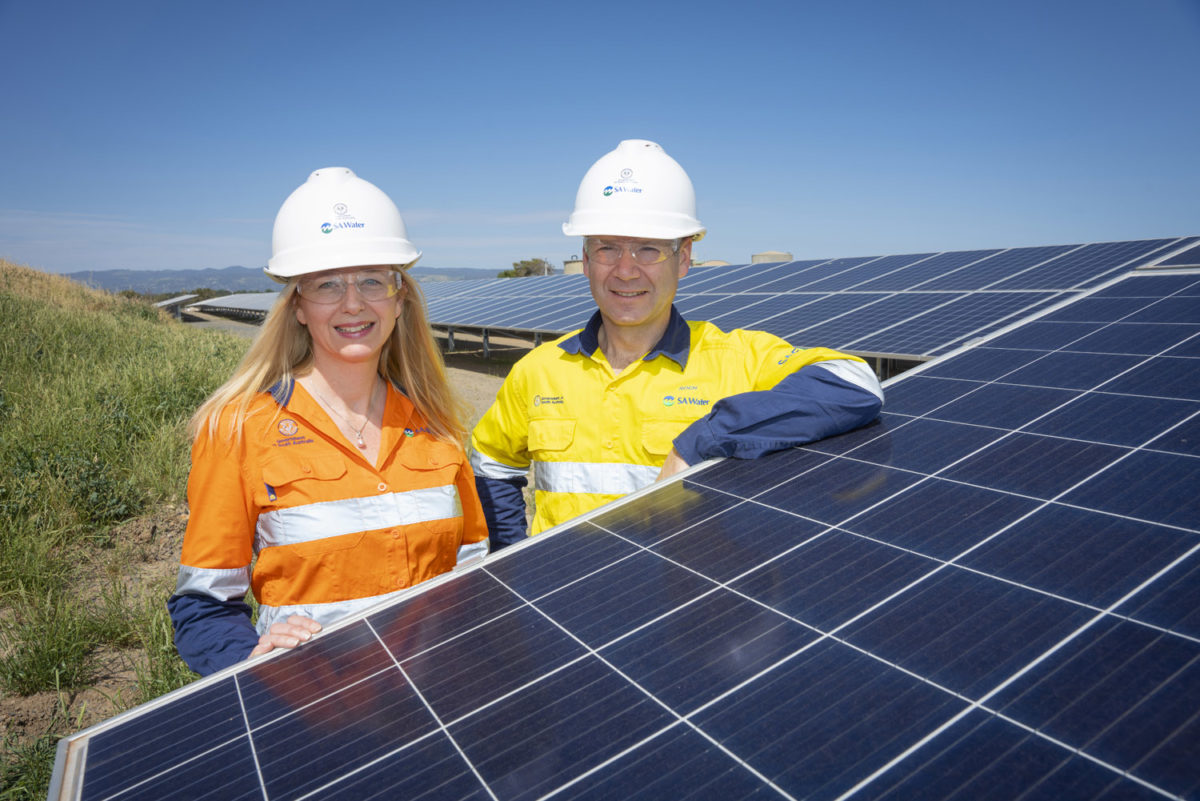SA Water has bought 14 hectares of land off ExxonMobil Port Stanvac oil refinery in order to build a large-scale solar farm. The farm, which is expected to consist of over 35,000 solar panels, will perform much the same job as the oil refinery did, only cleaner, greener, and without all that hassle of sifting through outdated magazines in the waiting room of geological time.
The refined and renewable solar energy will be siphoned off to the neighbouring Adelaide Desalination Plant, a notorious greenhouse gas emitting facility which is pursuing a zero cost energy future.
ExxonMobil closed the refinery in 2003, and demolished it in 2014, clearly, a company that waits for dead organisms to decompose over the course of eons is not in any particular hurry. Although, Port Stanvac is supposedly the subject of a 10-year redevelopment project in order to ready it for future industrial activity. Construction on the solar farm is expected to begin in mid-2020.
SA Water, South Australia’s largest water and sewage services supplier, announced in January its plans to invest more than $300 million in solar and energy storage over the course of this year as it looks to achieve its ambitious zero cost energy future. Balancing the emissions of the Adelaide Desalination Plant, which is itself having solar panels installed at the time of publication, is a major step in that direction.
SA Water’s Senior Manager of Zero Cost Energy Future Nicola Murphy said it was pleasing to be able to breathe new life into the land, with a program that demonstrates how to transition to a low carbon economy.
“The site will see a complete turnaround from facilitating a traditional energy source to housing renewable energy resources that will reduce our carbon emissions by 10,710 tonnes per year.”
The array itself is to consist of fixed-tilt racking systems following the arc of the sun on an east to west axis. The panels will produce an average of 21 GWh of electricity per year. “During high production mode the combined solar generation and battery storage will offset around 50% of the plant’s energy costs,” continued Murphy.
Of course, there will be times of higher rainfall which put the desalination plant to rest, at these times the excess solar generation and energy storage will be exported to the National Electricity Market (NEM).
“The desalination process requires a significant amount of energy,” noted Murphy, “so putting more focus on our own energy generation will reduce our overall draw on the local electricity grid, allowing us to better manage operating costs.”
In 2018/2019, SA Water’s electricity bills rocketed up to nearly $83 million, giving the utility $83 million reasons to transition to renewables. SA Water’s $300 million investment will see the installation of more than half a million solar panels and 34 MWh of energy storage across 35 sites.
So far, SA Water has already installed 130,000 solar panels at sites such as the Bolivar Wastewater Treatment Plant and major pump stations long the Morgan and Whyalla Pipeline. “This initiative was designed by our people,” said Murphy, “and is a clear demonstration of SOuth Australians leading the way with the smarts and skills to strategically integrate renewable energy and storage within the longest water network in the country.”
This content is protected by copyright and may not be reused. If you want to cooperate with us and would like to reuse some of our content, please contact: editors@pv-magazine.com.









1 comment
By submitting this form you agree to pv magazine using your data for the purposes of publishing your comment.
Your personal data will only be disclosed or otherwise transmitted to third parties for the purposes of spam filtering or if this is necessary for technical maintenance of the website. Any other transfer to third parties will not take place unless this is justified on the basis of applicable data protection regulations or if pv magazine is legally obliged to do so.
You may revoke this consent at any time with effect for the future, in which case your personal data will be deleted immediately. Otherwise, your data will be deleted if pv magazine has processed your request or the purpose of data storage is fulfilled.
Further information on data privacy can be found in our Data Protection Policy.